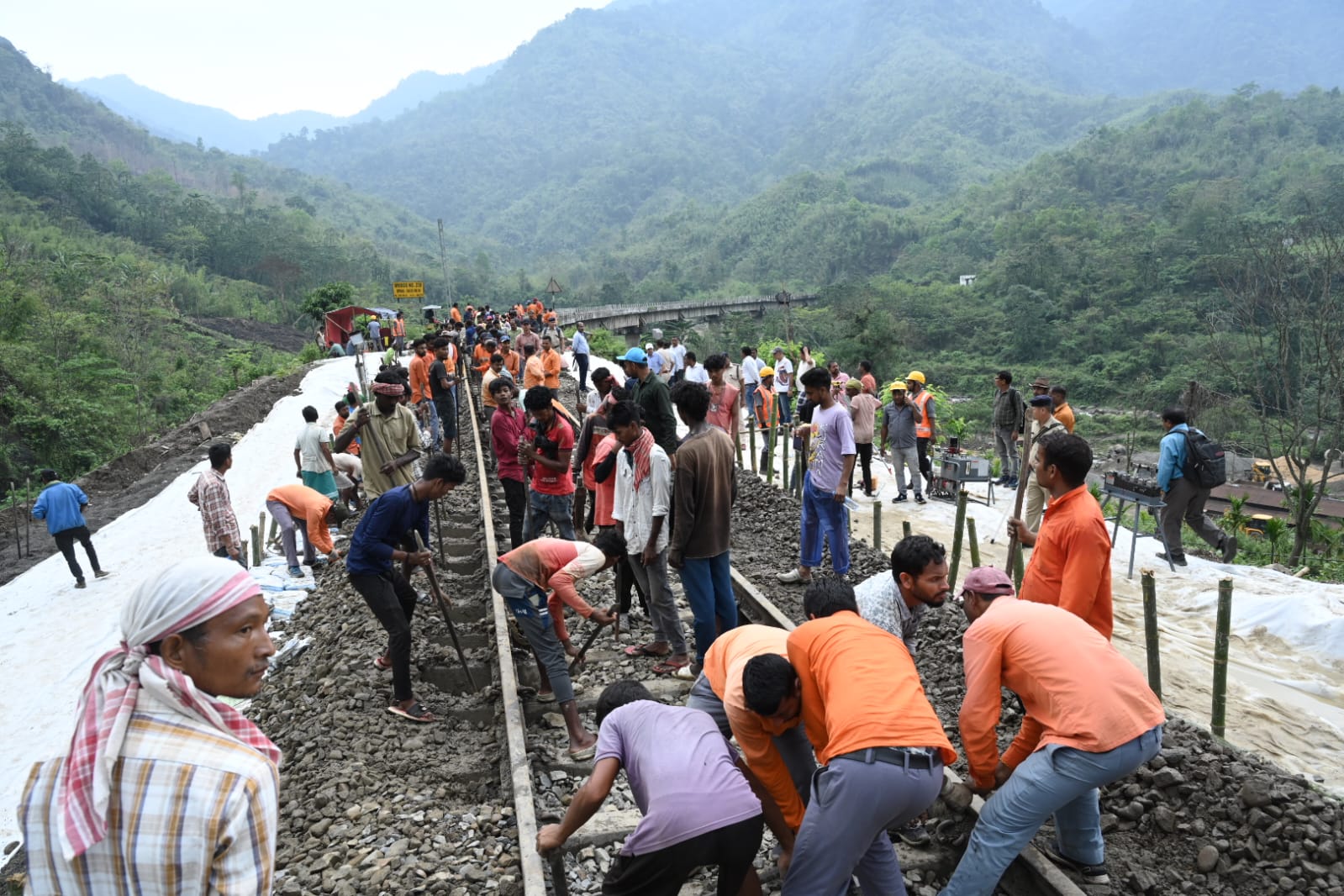In a cascade of natural calamities, landslides have wreaked havoc on the vital infrastructural arteries connecting Northeast India with the rest of the country. The Barak Valley of Assam, nestled amidst the verdant hills, finds itself marooned as landslides mercilessly block key highways and disrupt rail services, plunging the region into an abyss of isolation.
The National Highway-6, a lifeline for Silchar’s connectivity with Shillong, stands battered and besieged by nature’s fury. Rainfall-induced landslides in Meghalaya’s Sonapur area have transformed this once vital thoroughfare into a treacherous stretch, strewn with debris and uncertainty. Despite intermittent clearing operations, the specter of more landslides looms large, casting a shadow of peril over commuters and cargo alike.
The toll of this relentless onslaught was painfully evident as a moving truck in Sonapur bore the brunt of cascading soil and trees, halting vehicular movement for hours on end. Thousands of vehicles lay stranded, their occupants at the mercy of capricious weather and bureaucratic red tape. While authorities scramble to restore semblances of normalcy, the recurring nature of these disasters underscores a systemic failure to address the region’s susceptibility to natural calamities.
Meanwhile, the Northeast Frontier Railways grapples with its own set of challenges as landslides derail trains and disrupt vital rail links. In Dima Hasao district, the derailment of a goods train and a loco engine further exacerbates the region’s woes, leaving commuters stranded and cargo in limbo. With cancellations and rescheduling becoming the norm, the reliability of rail transport hangs precariously in the balance.

As if to compound the misery, Arunachal Pradesh’s Dibang Valley bears the brunt of yet another landslide, severing road access along the China border. Heavy rainfall, a perennial harbinger of chaos in the region, conspires with nature’s forces to strand commuters and disrupt essential services. While prompt restoration instructions emanate from the corridors of power, the ground reality remains bleak, with residents grappling with the harsh realities of isolation and inconvenience.
Amidst the debris and despair, one glaring truth emerges – the urgent need for a concerted effort to fortify Northeast India’s infrastructure against the vagaries of nature. As landslides continue to wreak havoc with alarming regularity, the region’s resilience hangs in the balance, underscoring the imperative for proactive measures to safeguard lives and livelihoods in the face of nature’s fury.
HCM Dr @himantabiswa is monitoring the flooding & landslides caused by heavy rainfall in Dima Hasao and Barak Valley. HCM has directed authorities to ensure connectivity is restored at the earliest and all assistance is provided to those affected.
1/2
— Chief Minister Assam (@CMOfficeAssam) May 2, 2024
Assam Chief Minister, Dr. Himanta Biswa Sarma is monitoring the flooding and landslides caused by heavy rainfall in Dima Hasao and Barak Valley. HCM has directed authorities to ensure connectivity is restored at the earliest and all assistance is provided to those affected. HCM expressed his deepest condolences to the family of the deceased of the unfortunate bus accident in Ditokcherra. While wishing a speedy recovery to those injured, HCM has directed the best possible medical attention is provided.
The lack of immediate action by the authorities can be attributed to various factors, including logistical challenges in reaching remote areas, bureaucratic hurdles in coordinating relief efforts, and the sheer scale of the disaster overwhelming available resources. Additionally, the recurring nature of such calamities may lead to a sense of complacency or insufficient preparation, exacerbating delays in response and recovery efforts.
